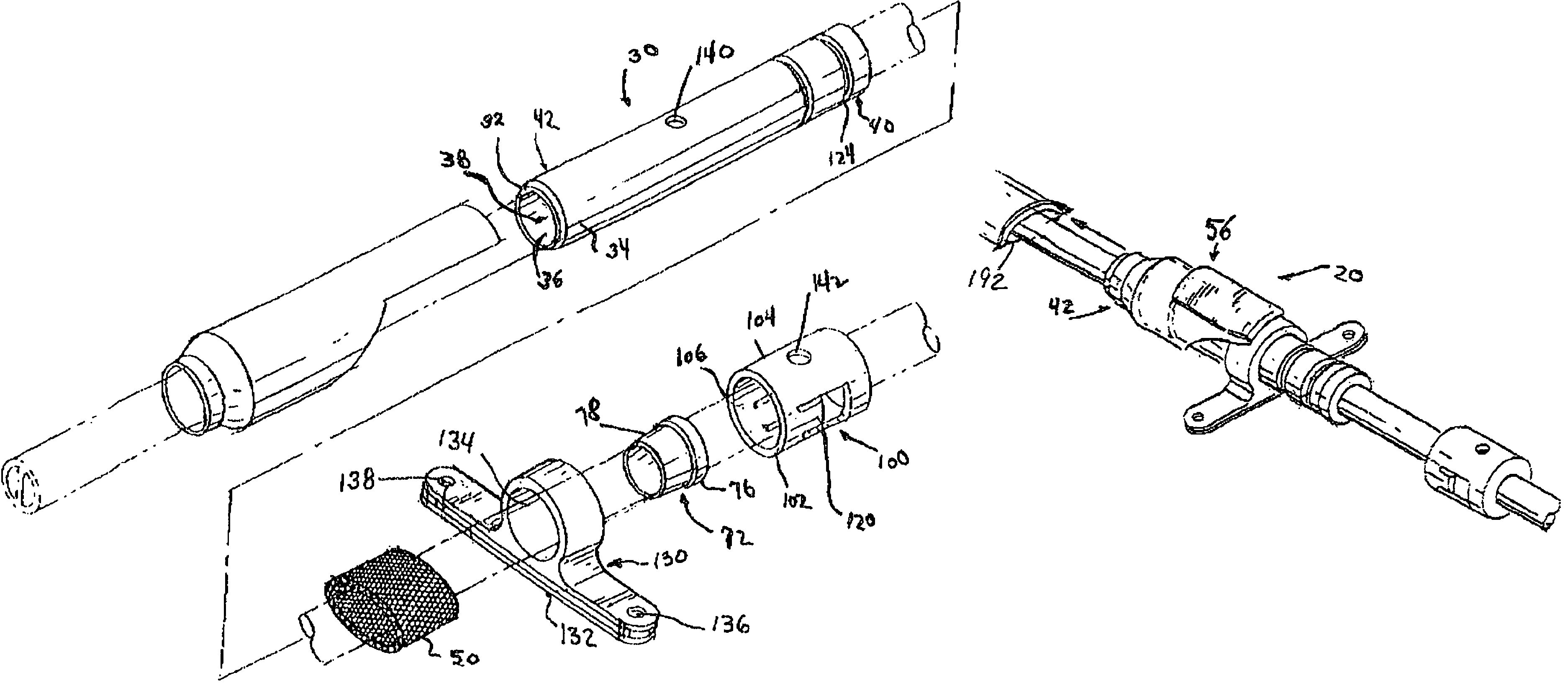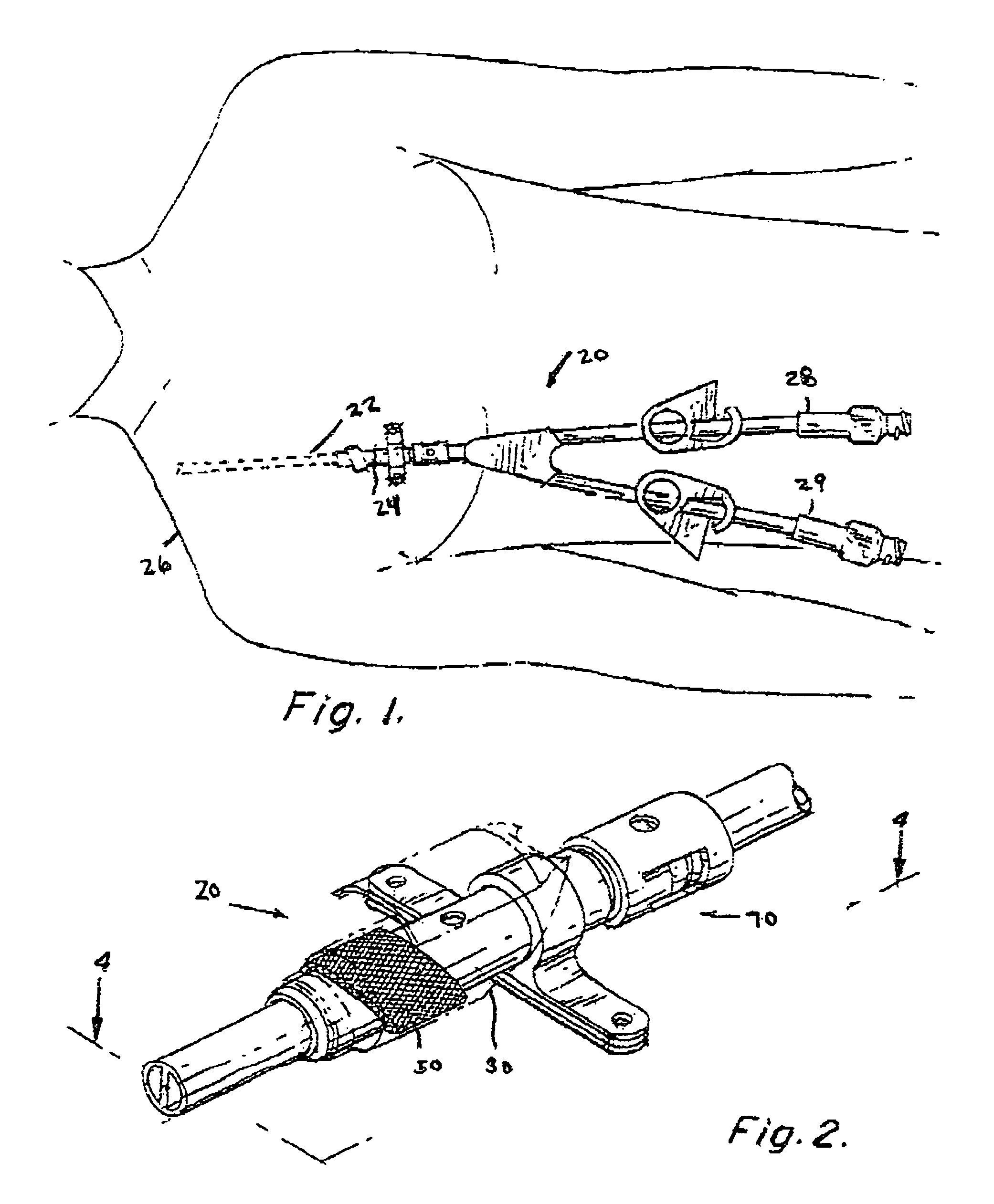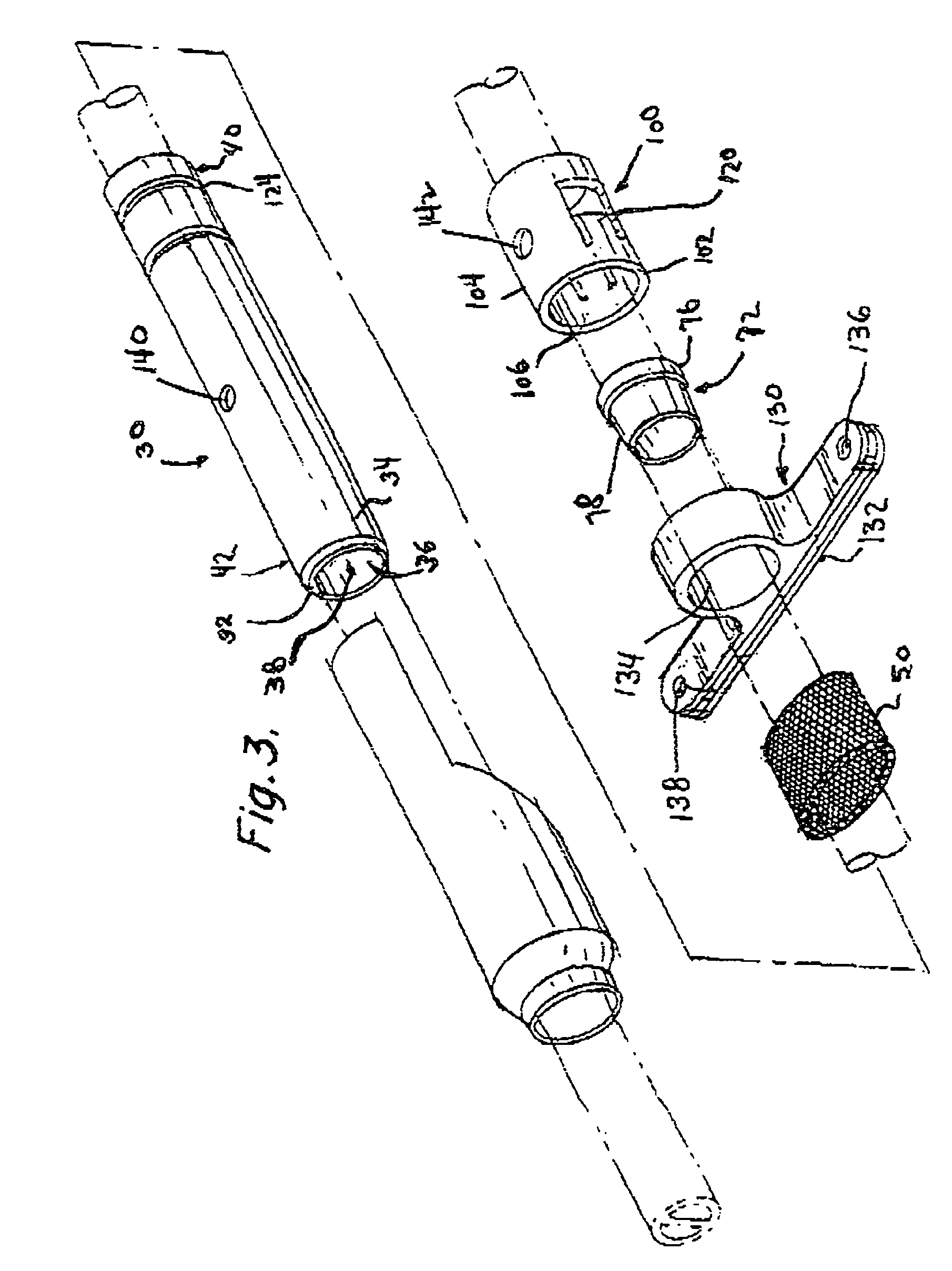Apparatus and method for facilitating the replacement of an implanted catheter
a catheter and elongation technology, applied in the field of medical technology, can solve the problems of increasing the difficulty of removing and/or increasing the difficulty of repositioning the implanted catheter, so as to prevent abrasion damage, prevent the introduction of deleterious materials, and peel away the sheath easily
- Summary
- Abstract
- Description
- Claims
- Application Information
AI Technical Summary
Benefits of technology
Problems solved by technology
Method used
Image
Examples
Embodiment Construction
[0021]Various medical regimens utilize a percutaneously implanted flexible elongate conduit to provide access to an interior body site. For example, hemodialysis drug infusion, plasmapheresis, and other procedures typically employ a percutaneously implanted catheter for delivering fluid to or extracting fluid from an interior body site. Other procedures utilize an electric cable to deliver an electric signal to, or extract an electric signal from, an interior body site. The present invention is directed to a method and apparatus for facilitating the long term implantation and utilization of a flexible elongate conduit and for facilitating the positioning, repositioning, and replacement, or exchange, of the conduit.
[0022]FIG. 1 schematically depicts an apparatus 20 in accordance with the invention for percutaneously implanting a catheter 22 through an incision 24 in a patient 26 undergoing an exemplary hemodialysis procedure. In such a procedure, a dual lumen catheter 22 is typically...
PUM
 Login to View More
Login to View More Abstract
Description
Claims
Application Information
 Login to View More
Login to View More - R&D
- Intellectual Property
- Life Sciences
- Materials
- Tech Scout
- Unparalleled Data Quality
- Higher Quality Content
- 60% Fewer Hallucinations
Browse by: Latest US Patents, China's latest patents, Technical Efficacy Thesaurus, Application Domain, Technology Topic, Popular Technical Reports.
© 2025 PatSnap. All rights reserved.Legal|Privacy policy|Modern Slavery Act Transparency Statement|Sitemap|About US| Contact US: help@patsnap.com



